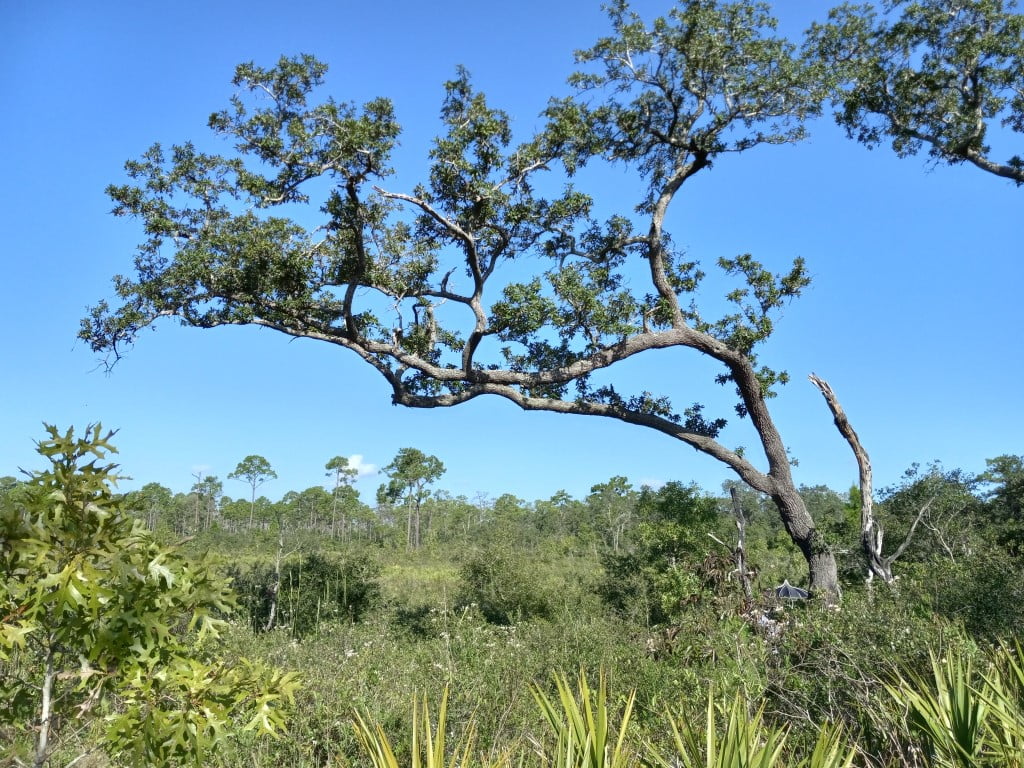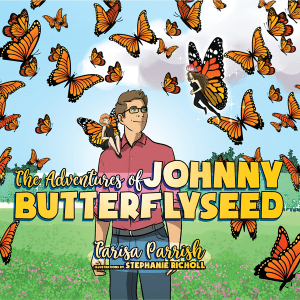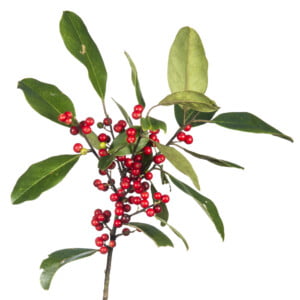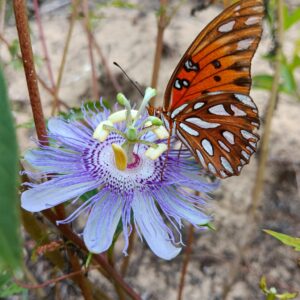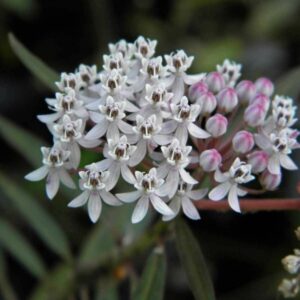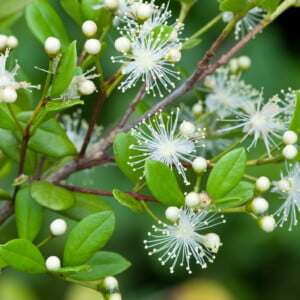5 Florida-Native Sand Live Oak Seeds (Quercus Geminata)
$3.00
5 in stock
Description
Johnny Butterflyseed’s Florida-Native Sand Live Oak Seeds (Quercus geminata)
Bring a piece of Florida’s unique ecology into your garden with Johnny Butterflyseed’s ‘5 Florida-Native Sand Live Oak Seeds (Quercus geminata).’ Sourced responsibly from conservation lands on the Lake Wales Ridge in Polk County, Florida, these seeds are collected following the Center for Plant Conservation guidelines to ensure sustainability and protect the native ecosystem. Quercus geminata, commonly known as Sand Live Oak, is a resilient and ecologically significant species that supports diverse wildlife while adding beauty and shade to landscapes.
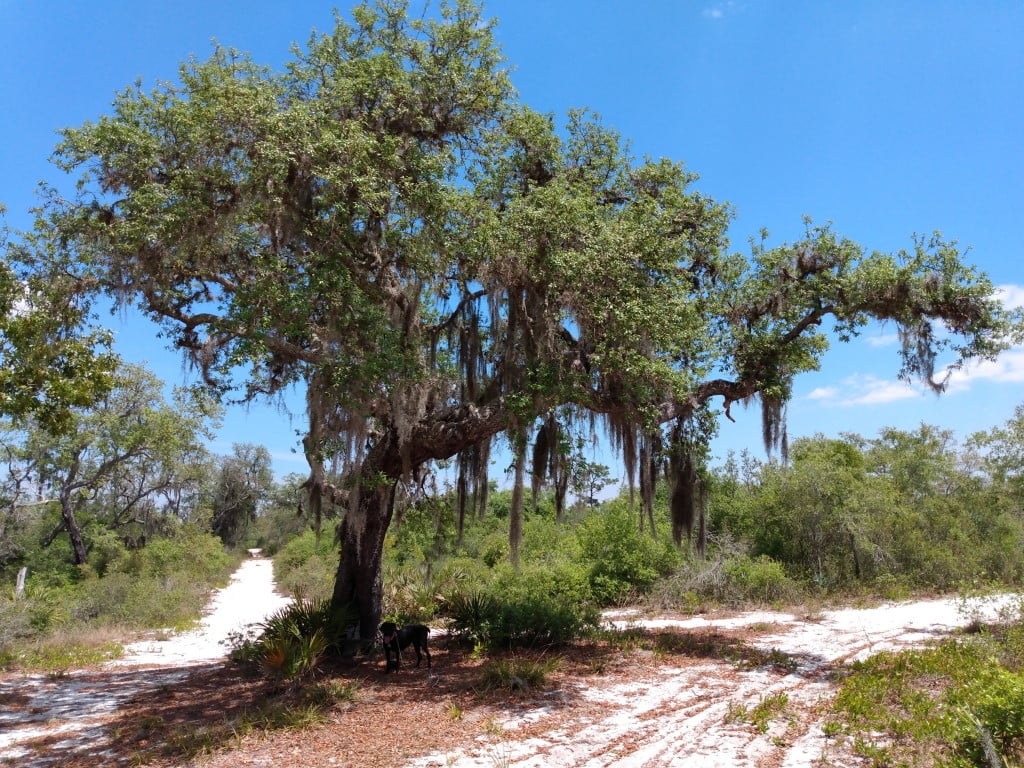
USDA Zones and Native Range
USDA Hardiness Zones: 7a-10b
Native Range: The Sand Live Oak is native to the coastal plains of the southeastern United States, primarily found in Florida, Georgia, Alabama, Mississippi, Louisiana, North and South Carolina. It thrives in sandy soils, dunes, and scrub habitats, particularly along the Lake Wales Ridge in Florida.
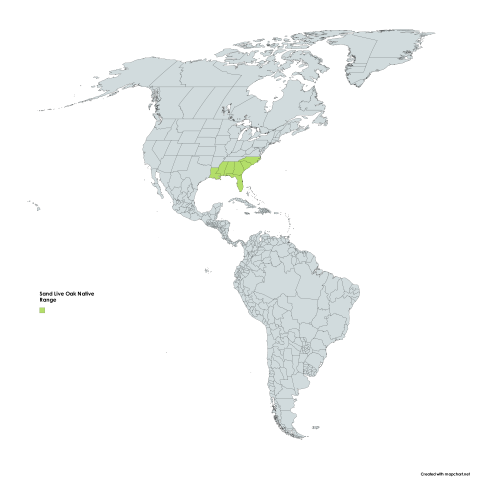
Ecology and Associated Species
Sand Live Oak plays a critical role in the native ecosystems of the southeastern U.S., particularly in scrub and sandhill habitats. It often associates with species such as:
– Ground Cover and Shrubs: Florida Rosemary (Ceratiola ericoides), Sand Pine (Pinus clausa), Scrub Palmetto (Sabal etonia)
– Other Trees: Longleaf Pine (Pinus palustris), Chapman’s Oak (Quercus chapmanii), and Myrtle Oak (Quercus myrtifolia)
– Wildflowers: Blanket Flower (Gaillardia pulchella), Florida Tickseed (Coreopsis floridana), and Blue Curls (Trichostema dichotomum)
These habitats are home to a wide variety of wildlife, including gopher tortoises, Florida scrub-jays, and numerous species of insects that rely on Quercus geminata for food and shelter.
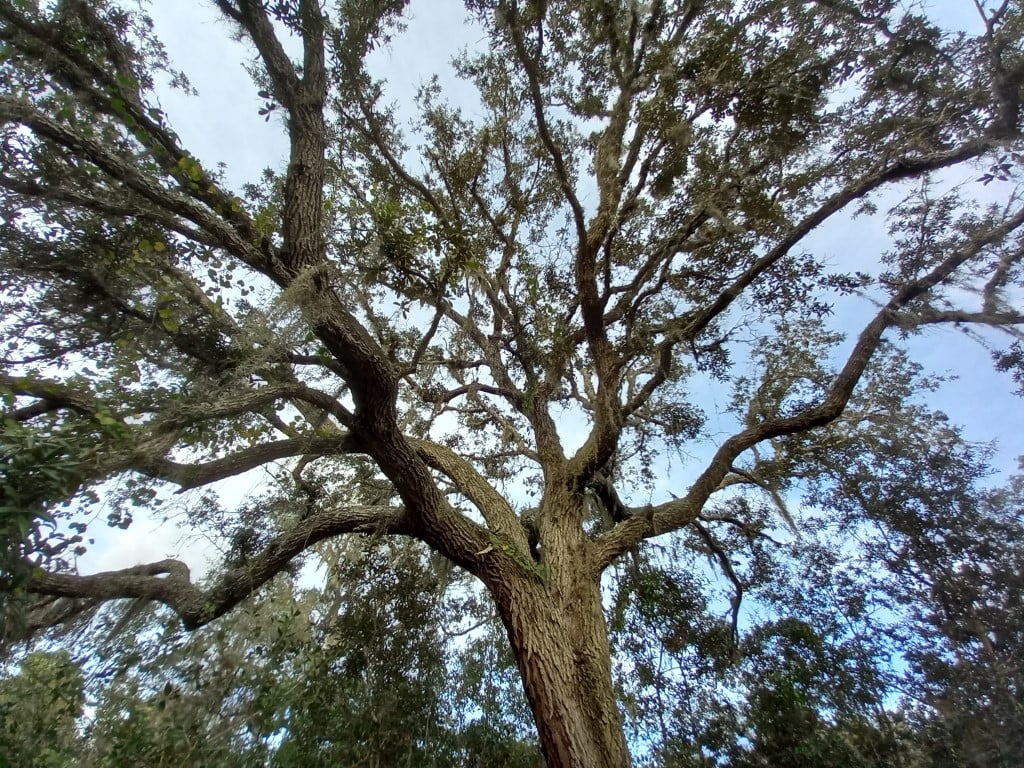
Stratification, Scarification, and Germination Instructions
– Stratification: No cold stratification is necessary for Quercus geminata seeds.
– Scarification: Gently rub the seed coat with fine sandpaper or nick the shell with a file to aid water absorption, but this step is generally not required for fresh seeds.
– Germination:
– Soak the seeds in water for 24 hours before planting.
– Plant seeds about 1 inch deep in a well-draining soil mix. A sandy mix replicates the natural soil conditions.
– Keep the soil moist but not waterlogged.
– Germination typically occurs within 2 to 4 weeks under optimal conditions.
– For best results, plant in the fall to mimic natural seeding cycles, allowing roots to establish over winter.
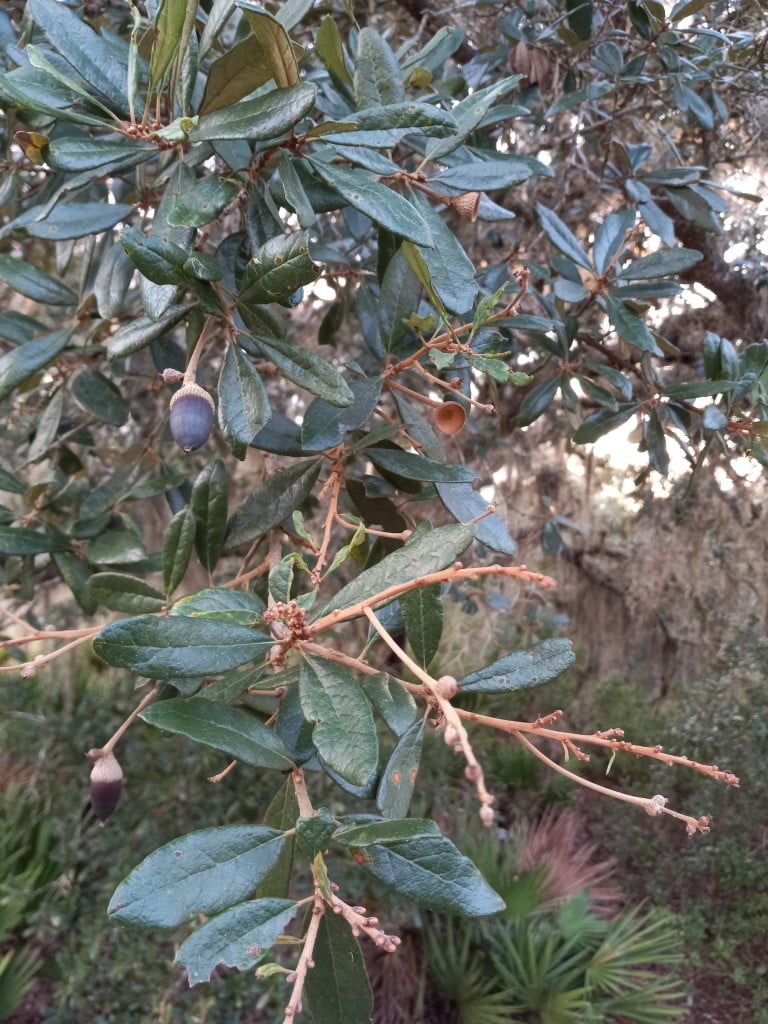
Insect Species That Use Quercus as a Larval Host Plant
Sand Live Oak is an essential host plant for numerous insects, especially lepidopterans (moths and butterflies). Notable species that use Quercus as a larval host include:
– Butterflies and Moths:
– Northern Hairstreak (Satyrium favonius): The larvae feed on oak leaves.
– Horace’s Duskywing (Erynnis horatius): A common skipper butterfly whose caterpillars utilize oak leaves as their primary food source.
– Red-spotted Purple (Limenitis arthemis): This striking butterfly’s larvae are known to feed on various oaks, including Sand Live Oak.
– Other Insects:
– Oak Gall Wasps (Family Cynipidae): These wasps induce the formation of galls on oak trees, which provide habitat and food for their larvae.
– Leaf Miners (Family Gracillariidae): Larvae that tunnel within the leaves of oaks, creating characteristic ‘mines’ visible on the leaf surface.
By planting Sand Live Oak, you contribute to a thriving ecosystem, supporting a range of pollinators, caterpillars, and other beneficial insects. It’s not just about growing a tree; it’s about restoring and nurturing a small yet vital part of Florida’s natural heritage.
Care and Maintenance:
Sand Live Oak is exceptionally drought-tolerant once established and prefers full sun to partial shade. It is well-suited to poor, sandy soils and requires minimal maintenance, making it ideal for xeriscaping and habitat restoration projects. As a long-lived species, it provides enduring ecological value and a legacy of natural beauty for generations.
Contribute to Conservation:
Your purchase supports Johnny Butterflyseed’s mission of promoting native plant conservation and ecological education. Planting these seeds is an act of conservation that helps maintain the biodiversity and ecological resilience of Florida’s unique landscapes.
